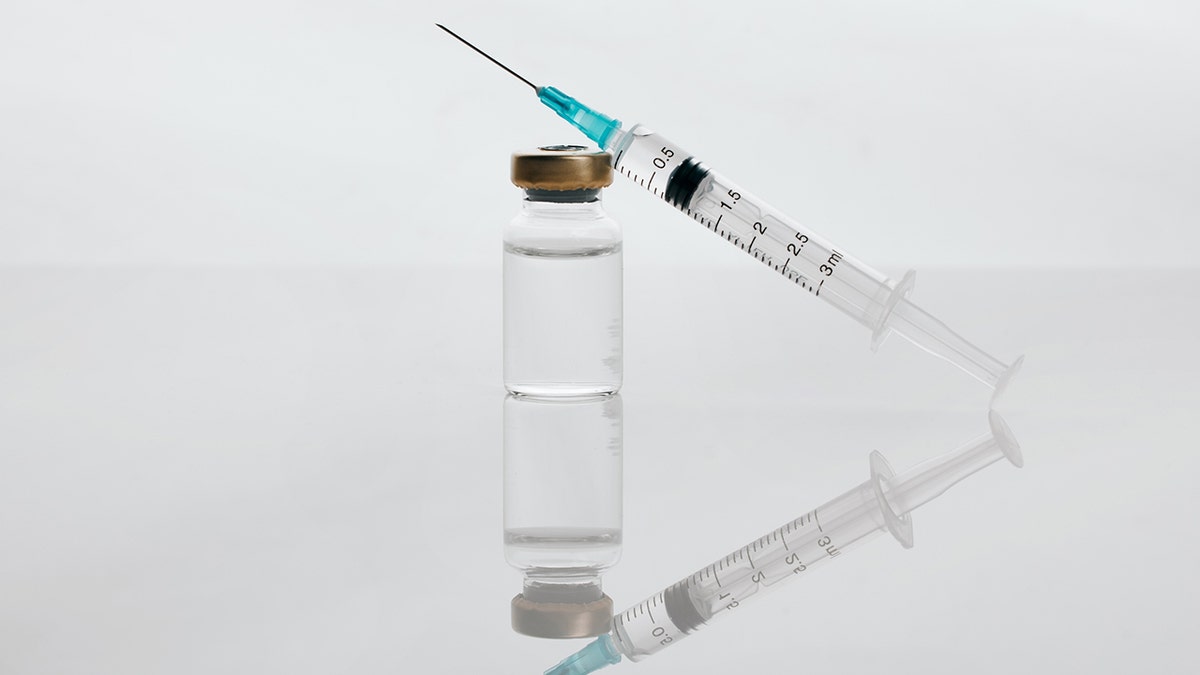Health
New Obesity Drugs Come With a Side Effect of Shaming

Eileen Isotalo was always able to lose weight, but always gained it back. Now 66, her first diet was with Weight Watchers at age 14. She went on to try one diet after another and bought so many books on weight loss that she thinks she has more than the public library.
In desperation, she finally went to a weight management clinic at the University of Michigan. She had sleep apnea and aching knees, but could not curb her appetite.
“It’s just this drive to eat,” said Ms. Isoltalo, a retired interior design coordinator. “It’s almost like this panic feeling when you start craving food.”
“My mental shame was profound,” she said.
Now, though, since she started taking Wegovy, one of a new class of drugs for obesity that was prescribed by her doctor at the clinic, those cravings are gone. She has lost 50 pounds and jettisoned the dark clothes she wore to hide her body. Her obesity-related medical problems have vanished along with much of the stigma that caused her to retreat from family and friends.
But like others at the clinic, she still struggles with the fear others will judge her for receiving injections to treat her obesity rather than finding the willpower to lose weight and keep it off.
Yet the drug, she said, “changed my life.”
Wegovy and drugs like it make this “a very exciting time in the field,” said Dr. Susan Yanovski, co-director of the office of obesity research at the National Institute of Diabetes and Digestive and Kidney Diseases.
About 100 million Americans, or 42 percent of the adult population, have obesity, according to the Centers for Disease Control and Prevention. For the first time, people with obesity, who faced a lifetime of medical jeopardy, can escape the ruthless trap of fruitless dieting and see their obesity-related health problems mitigated, along with the weight loss.
But there is still the taint.
“There’s a moral component to it,” Dr. Yanovski said. “People really believe that people with obesity just need to summon their willpower and they think that taking a medicine is the easy way out.”
Unlike other chronic diseases, obesity is on full public display, Dr. Yankovski said. “No one looks at you and knows you have high cholesterol of high blood pressure,” she said.
Obesity, she added, “is one of the most stigmatized conditions out there. “
Wegovy and a similar but less effective medication, Saxenda, are the only ones in their class of drugs so far to be approved for the treatment of obesity — others like Ozempic and Mounjaro are diabetes drugs but also spur weight loss.
Novo Nordisk, Wegovy’s maker, reports that doctors in the United States have written about 110,000 prescriptions for the drug. Citing a huge demand, the company recently put its advertising for Wegovy on hold.
“We can’t make enough,” said Ambre James-Brown, a Novo Nordisk spokeswoman. Supplies are so limited that the company is only selling the drug in the United States, Norway and Denmark, the company’s corporate headquarters. Its high list price of $13,492 a month puts it out of reach for most whose insurance will not cover it. But increasingly many insurers do.
The drugs have arrived at a time when researchers have documented the risks of obesity and the futility of prescribing only diet and exercise as a treatment. Decades of studies have consistently shown that very few people can lose excess weight and keep it off with lifestyle changes alone.
People with obesity are at risk for a variety of serious medical conditions, including diabetes, hypertension, high cholesterol, sleep apnea and nonalcoholic fatty liver disease, a leading reason for liver transplants in the United States.
Losing weight can make some of these complications vanish.
Yet the belief persists — fed by diet gurus, influencers and an industry selling supplements and diet plans — that if people really really tried, they could shed pounds.
So those who take a drug like Wegovy often end up in uncomfortable situations that are influenced by the common view that obesity is a lifestyle choice.
At the University of Michigan clinic there are those like Ms. Isotalo whose reluctance to admit to taking Wegovy stems from her conviction that those who take it are often thought to be cheating.
Another patient, though, Katarra Ewing of Detroit, readily tells anyone who asks that she takes the drug. She tried diets, but it was Wegovy that allowed her to lose 90 pounds.
She came to the weight management clinic after her all-night shift at a Ford factory, ebullient and vibrant, wearing a vivid green sweater. She has more energy now that she lost the weight, her mood is brighter, her high blood pressure gone.
But she discovered an unintended social consequence to weight loss, as many longtime friends fell away.
“Only my genuine friends are left and that’s a very small number,” Ms. Ewing said.
Obesity medicine specialists say they are not surprised — they see the same thing after people lose weight with bariatric surgery.
Relationships shift because obesity is such a defining condition. People of normal weight may feel superior to a friend with obesity and that helps define a relationship — until the friend loses weight. Other friends who themselves have obesity may use the condition as a bonding factor in the relationship. Now that is gone.
Another issue is the drugs’ reputation as vanity medications, which has been amplified by comedians’ punchlines at the Oscars and in other high-profile settings.
But when Samuel Simpson came to the weight management clinic, he considered losing weight to be a matter of life or death.
Mr. Simpson was terrified he’d face the fate of his mother, brother and sister, all of whom had obesity and diabetes. They all developed kidney failure that ultimately killed them, each dying at the age of 59.
His first appointment with Dr. Amy Rothberg at the clinic was nearly two years ago, when he was 58. He had obesity and diabetes. Although he was taking high doses of insulin to lower his blood sugar, his kidneys were starting to fail.
“I was so afraid,” he said. “Was I going to end up on dialysis like everyone else? I’d be history.”
He began with a diet and then Dr. Rothberg added Mounjaro, a drug by Eli Lilly that appears to be even more powerful than Wegovy in eliciting weight loss, but is, so far, only approved for people with diabetes.
Now he’s lost 44 pounds, 20 percent of his original weight, and his diabetes is in remission. The weight loss, he said, “turned my life around.”
He will tell those who ask how he lost the weight,
“I’m not like the roadside preacher but when someone asks me how I did this I will tell them,” he said.
Art Regner had a different issue. A garrulous color commentator for the Detroit Red Wings hockey team, he said he was not ready to resort to medication. But when he came to Dr. Rothberg’s clinic he was chagrined. He’d regained 22 of the 76 pounds he lost by dieting.
Dr. Rothberg, who is also the medical director of Rewind, a company that counsels diabetic patients, suggested Wegovy or Mounjaro. But Mr. Regner felt he should have enough willpower to do it on his own. He knows his blood sugar is high and is aware of the consequences of diabetes.
Dr. Rothberg gently explained to him that it was not his fault he kept regaining weight every time he lost some.
“I think biology is conspiring against you,” she said. “I don’t think it’s a matter of willpower.”
Mr. Regner was not swayed. “I believe in myself,” he said. “I wake up in the morning and look in the mirror and say, ‘Are you going to do it or aren’t you?’”

Health
‘The Pitt’ Captures the Real Overcrowding Crisis in Emergency Rooms

The emergency department waiting room was jammed, as it always is, with patients sitting for hours, closely packed on hard metal chairs. Only those with conditions so dire they needed immediate care — like a heart attack — got seen immediately.
One man had had enough. He pounded on the glass window in front of the receptionist before storming out. As he left, he assaulted a nurse taking a smoking break. “Hard at work?” he called, as he strode off.
No, the event was not real, but it was art resembling life on “The Pitt,” the Max series that will stream its season finale on Thursday. The show takes place in a fictional Pittsburgh hospital’s emergency room. But the underlying theme — appalling overcrowding — is universal in this country. And it is not easy to fix.
“EDs are gridlocked and overwhelmed,” the American College of Emergency Physicians reported in 2023, referring to emergency departments.
“The system is at the breaking point,” said Dr. Benjamin S. Abella, chair of the department of emergency medicine at Mount Sinai’s Icahn School of Medicine in New York.
“The Pitt” follows emergency room doctors, nurses, medical students, janitors and staff hour by hour over a single day as they deal with all manner of medical issues, ranging from a child who drowned helping her little sister get out of a swimming pool to a patient with a spider in her ear. There were heart attacks and strokes, overdoses, a patient with severe burns, an influencer poisoned by heavy metals in a skin cream.
Because this is television, many of the thorny problems get neatly resolved in the show’s 15 episodes. A woman who seems to have abandoned her elderly mother returns, apologizing because she fell asleep. Parents whose son died from an accidental fentanyl overdose come around to donating his organs. A pregnant teenager and her mother, at odds over a medical abortion, come to a resolution following a wise doctor’s counsel.
But over and over again, the image is of a system working way beyond its capacity. There is the jammed waiting room and the “boarders” — patients parked in emergency rooms or hallways for days or longer because there are no hospital beds. (The American College of Emergency Physicians calls boarding a “national public health crisis.”)
There are the long waits for simple tests. There is the hallway medicine — patients who see a doctor in the hallway, not in a private area, because there is no place else to put them.
And there is the violence, verbal and physical, from patients with mental problems and those, like the man who punched the nurse, who just get fed up.
“‘The Pitt’ shows the duress the system is under,” Dr. Abella said. “Across the country we see this day in and day out.”
But why can’t this problem be fixed?
Because there’s no simple solution, said Dr. Ezekiel J. Emanuel, co-director of the Health Transformation Institute at the University of Pennsylvania’s Perelman School of Medicine. The problem, he said is “multipronged and there is no magic wand.”
Part of it is money.
Having patients jammed up in emergency rooms guarantees that no bed will go unused, bolstering revenues for hospitals.
Then there’s the problem of discharging patients. Spaces are scarce in nursing homes and rehabilitation centers, so patients ready to leave the hospital often are stuck waiting for a space to open up elsewhere.
Schedules are another difficulty, said Dr. Jeremy S. Faust, attending physician in the Brigham and Women’s Hospital Department of Emergency Medicine. Many rehabilitation centers admit patients only during business hours, he said. If an E.R. patient is ready to be discharged to one during a weekend, that patient has to wait.
In “The Pitt,” as in real life, patients often show up in emergency rooms with problems — like a child with an earache — that a private doctor should be able to handle. Why don’t they just go to their own doctor instead of waiting hours to be seen?
One reason, Dr. Emanuel said, is that “primary care is going to hell in a handbasket.”
In many cities finding a primary care doctor is difficult. And even if you have one, getting an appointment can take days or weeks.
Many do not want to wait.
“The modern mentality, for better or worse, is: If I can’t get it now, I will look for other solutions,” Dr. Abella said.
That often means the emergency room.
Even building larger emergency rooms has not helped with the overcrowding.
Dr. Faust said that his hospital opened a new emergency room a few years ago with a large increase in the number of beds. A colleague, giving him a tour, proudly told him there was now so much space there would probably be no more hallway patients.
“I looked at him and said, ‘Bwhahahahaha,’” Dr. Faust said. “If you build it, they will come.”
He was right.
Health
Invasive strep throat strain has more than doubled in US, reports CDC

Cases of an invasive strain of strep throat have been steadily rising in some areas of the U.S., according to the Centers for Disease Control and Prevention (CDC).
The surveillance study, which was published in JAMA, showed that the incidence of group A Streptococcus (GAS) infection “substantially increased” from 2013 to 2022.
Affected states include California, Colorado, Connecticut, Georgia, Maryland, Minnesota, New Mexico, New York, Oregon and Tennessee.
STREP THROAT INFECTIONS HAVE SPIKED ABOVE PRE-COVID HIGHS, SAYS REPORT: ‘WE’VE MISSED CASES’
The overall incidence more than doubled, going from 3.6 to 8.2 cases per 100,000 persons at that time, according to the findings.
For the past near-decade, cases of group A Streptococcus (GAS) have been on the rise in 10 U.S. states. (iStock)
Infection rates were higher among residents of long-term care facilities, the homeless population and injection drug users.
While incidence was highest among people 65 and older, the relative increase over time was biggest among adults aged 18 to 64.
“Accelerated efforts to prevent and control GAS are needed, especially among groups at highest risk of infection,” the CDC researchers concluded in the study.
NOROVIRUS SICKENS OVER 200 CRUISE SHIP PASSENGERS ON MONTH-LONG VOYAGE
According to a CIDRAP press release by the University of Minnesota, GAS is most known for causing non-invasive diseases like strep throat and impetigo.
The strain can also cause more severe infections, like sepsis, necrotizing fasciitis and streptococcal toxic shock syndrome.

GAS can lead to more severe infections, like sepsis and streptococcal toxic shock syndrome. (iStock)
The researchers identified 21,213 cases of invasive GAS, leading to 20,247 hospitalizations and 1,981 deaths.
Bacteremic cellulitis was the most common disease caused by GAS, according to the press release, followed by septic shock, pneumonia and bacteria in the bloodstream without an apparent cause (known as bacteremia without focus).
“The recent assault of viruses, including COVID-19, has weakened people’s immune systems.”
In an accompanying JAMA editorial, Joshua Osowicki, MBBS, PhD, a pediatric infectious diseases physician at Royal Children’s Hospital Melbourne, said there has been a global uptick in GAS cases following the COVID-19 pandemic.
“In any of its forms — from skin and soft tissue infections, pneumonia, bone and joint infections, or sepsis without a clear clinical focus — invasive GAS can be insidious and unpredictable, testing the lifesaving capacity of even the world’s most advanced medical facilities,” he wrote.

“We really need a vaccine against this, but don’t have it,” Dr. Marc Siegel shared. (iStock)
“Surges of invasive and noninvasive GAS disease in 2022 and 2023 have been reported in countries spanning the Northern and Southern Hemispheres, with new reports of the same phenomenon still coming to light.”
Fox News senior medical analyst Dr. Marc Siegel commented that GAS requires early intervention, as it can be “quite life-threatening” and “misperceived” as something milder.
MEASLES OUTBREAK CONTINUES: SEE WHICH STATES HAVE REPORTED CASES
“We really need a vaccine against this, but don’t have it,” he told Fox News Digital.
“[It’s] increasing dramatically among socioeconomically disadvantaged groups, including the homeless, substance abusers, those with increased skin breakdown and those sharing needles.”
The infection is also associated with IV fentanyl use as part of the opioid epidemic, Siegel added.

After a dip in cases during the coronavirus pandemic, the rate of infections was 30% higher than the previous peak seen in February 2017. (iStock)
In 2023, strep throat infections caused by GAS skyrocketed, mostly in children, according to a report from Epic Research.
After a dip in cases during the coronavirus pandemic, the rate of infections was 30% higher than the previous peak seen in February 2017, the report found.
Dr. Shana Johnson, a physical medicine and rehabilitation physician in Scottsdale, Arizona, previously shared with Fox News Digital that rates of GAS, including the more dangerous invasive type, were “at the highest levels seen in years.”
In an interview with Fox News Digital at the time, Siegel reported that the spike in cases is likely a result of other circulating viruses.
CLICK HERE TO SIGN UP FOR OUR HEALTH NEWSLETTER
“The recent assault of viruses, including COVID-19, has weakened people’s immune systems,” he said. “Also, we haven’t been on the lookout for them and have missed cases.”
Group A strep is best treated with antibiotics unless a more severe illness is contracted, according to Johnson.
“Antibiotics for strep throat reduce how long you are sick and prevent the infection from getting more severe and spreading to other parts of the body,” she said.

Group A strep cases in 2023 were most identified in kids aged 4 to 13. (iStock)
Group A strep bacteria commonly spread through droplets when an infected person coughs, sneezes or talks, according to the CDC, but can spread through infected sores on the skin.
To help reduce the spread, doctors say to wash hands often with soap and water, avoid sharing glasses or utensils with those who are infected, and cover the mouth and nose when coughing or sneezing.
For more Health articles, visit foxnews.com/health
“If you have strep throat, stay home until you no longer have a fever and have taken antibiotics for at least 24 hours,” Johnson advised.
Fox News Digital reached out to the CDC for comment.
Health
RFK Jr. Offers Qualified Support for Measles Vaccination

In a rare sit-down interview with CBS News, Robert F. Kennedy Jr., the nation’s health secretary, recommended the measles vaccine and said he was “not familiar” with sweeping cuts to state and local public health programs.
The conversation was taped shortly after his visit to West Texas, where he attended the funeral of an 8-year-old girl who died after contracting measles. A raging outbreak there has sickened more than 500 people and killed two young children.
In clips of the discussion released Wednesday, Mr. Kennedy offered one of his strongest endorsements yet of the measles vaccine. “People should get the measles vaccine, but the government should not be mandating those,” he said.
A few moments later, however, he raised safety concerns about the shot, as he has previously: “We don’t know the risks of many of these products because they’re not safety tested,” he said.
For months, Mr. Kennedy has faced intense criticism for his handling of the West Texas outbreak from medical experts who believe that his failure to offer a full-throated endorsement of immunization has hampered efforts to contain the virus.
Moreover, he has promoted unproven treatments for measles, like cod liver oil. Doctors in Texas believe its use is tied to signs of liver toxicity in some children arriving in local hospitals.
Throughout the outbreak, Mr. Kennedy has often paired support for vaccines with discussions of safety concerns about the shots, along with “miraculous” alternative treatments.
Over the weekend, he posted on social media that the measles, mumps and rubella vaccine was “the most effective way” to prevent the spread of measles — a statement met with relief from infectious disease experts and with fury from his vaccine-hesitant base.
That night, he posted again, this time applauding “two extraordinary healers” who he claimed had effectively treated roughly 300 measles-stricken children with budesonide, a steroid, and clarithromycin, an antibiotic.
Scientists say there are no cures for a measles infection, and that claiming otherwise undermines the importance of a vaccination.
Later in the CBS interview, Mr. Kennedy was pressed on the administration’s recent move to halt more than $12 billion in federal grants to state programs that address infectious disease, mental health and childhood vaccinations, among other efforts.
(A judge has temporarily blocked the cuts after a coalition of states sued the Trump administration.)
Mr. Kennedy said he wasn’t familiar with the interruptions, then asserted that they were “mainly D.E.I. cuts,” referring to diversity, equity and inclusion programs that have been targeted by the Trump administration.
Dr. Jonathan LaPook, CBS’s medical correspondent, asked about specific research cuts at universities, including a $750,000 grant to researchers at the University of Michigan to study adolescent diabetes.
“I didn’t know that, and that’s something that we’ll look at,” Mr. Kennedy said. “There’s a number of studies that were cut that came to our attention and that did not deserve to be cut, and we reinstated them.”
-

 Technology1 week ago
Technology1 week agoThe FAA hiding private jet details might not stop celebrity jet trackers
-

 News1 week ago
News1 week agoSupreme Court Rules Against Makers of Flavored Vapes Popular With Teens
-

 News1 week ago
News1 week agoNYC Mayor Eric Adams' corruption case is dismissed
-

 Technology1 week ago
Technology1 week agoHere’s how you can preorder the Nintendo Switch 2 (or try to)
-

 World1 week ago
World1 week agoWill European agriculture convert to new genomic techniques?
-

 News1 week ago
News1 week agoTrump to Pick Ohio Solicitor General, T. Elliot Gaiser, for Justice Dept. Legal Post
-

 News1 week ago
News1 week agoTrump’s ‘Liberation Day’ Tariffs Are Coming, but at a Cost to U.S. Alliances
-

 Politics1 week ago
Politics1 week agoFBI flooded with record number of new agent applications in Kash Patel's first month leading bureau
















